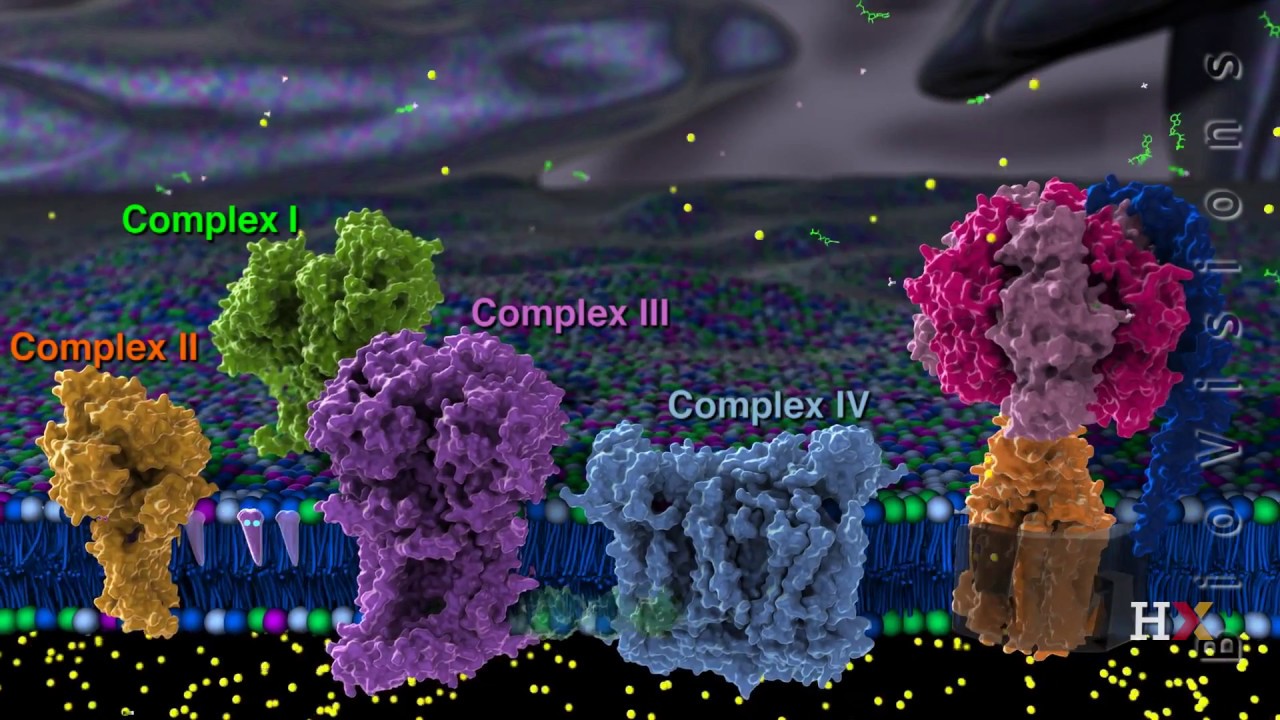Mitochondria were first described two decades before the Civil War. It took another 120 years to work out the biochemistry of oxidative phosphorylation and electron transport chain coupling which was the state of knowledge when I was in college in mumble. By 1984 molecular biology grads were skipping doctoral programs to work in biotech startups for big bucks and the pace hasn’t let up. I just came across this modern equivalent to the classroom filmstrip of my youth that shows the current state of knowledge of electron transport.
Videos like that really recharge my battery. Good to see that someone is doing effective science communication. Now if they’d make one explaining how plants resist blackspot…
I checked to see if they made a similar animation for the chloroplast but, alas, they did not.
At first I thought it was some type of numerical simulation of structural data but I think what they did was to cleverly splice outtakes of some 3-d models and fill in the background with drawings, like a Disney cel.
Yes, a cartoon. I don’t think the various complex I, II, III groups look much at all like the illustrations. For sure the ATPase is much more inscrutable. Even the best molecular dynamics simulations have a very hard time handling a protein with 50,000 atoms plus a few lipid molecules and a sprinkling of water. Someone at U of Illinois has done an aquaporin M-D model for some nanoseconds showing how water molecules line up and wiggle their way through the channel in the middle of the aquaporin. Recently someone else pushed it to about 1 microsecond for the protein alone to see how it vibrates, opening and closing its pore.
Back when Star Wars was young, Silicon Graphics developed a work station that was quickly adopted by crystallographers to display structures and illuminate them from different directions, and move them around just like various space ships. We could also dock small molecules to the protein. Most of the interesting advances in such kinds of machines came from the entertainment industry because there’s a whole lot more money in one movie than even the best scientists ever see in a lifetime of research grants. $100,000,000 is an astronomical sum you might say, though now good universities may take in that much in a year with just 1000 scientists (including students) employed.
Still, cartoons certainly have their place, giving us a notion of what’s going on at levels we can’t see. If you really want to see what a cell looks like take a look at the work of Jennifer Lipinncott at Janelia Farms. She has some remarkable movies created by supercomputing tracking of single particles, in this instance proteins, as they move around in cells. It uses some fantastic fluorescence optics and huge amounts of memory to make a realtime movie. Of course small molecules move so much faster that we simply can’t watch their actual motions.
Here’s another really interesting animation showing the workings of the nucleic apparatus. It’s non-denominational (not rose specific) but then neither are cell nucleii.
[media]Your Body's Molecular Machines - YouTube[/media]
